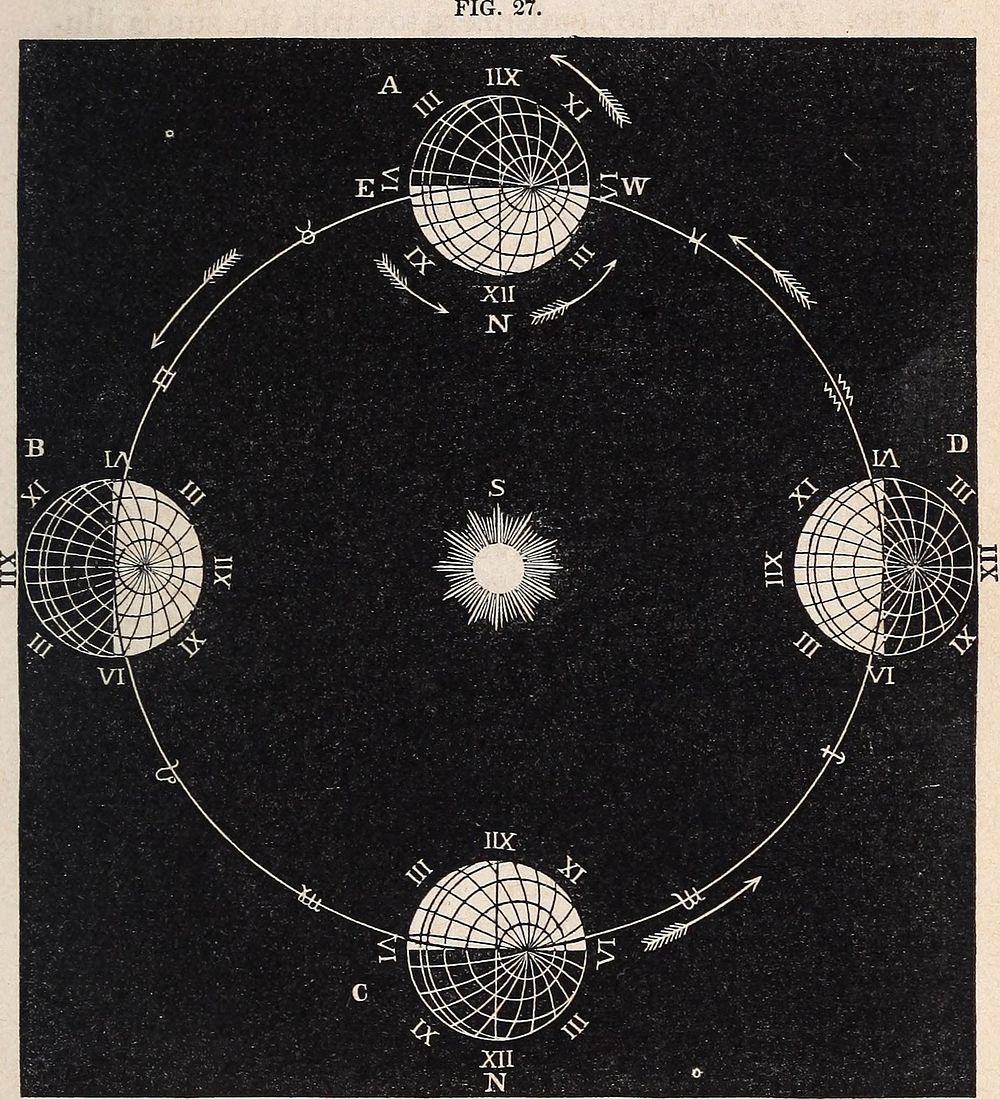https://creativecommons.org/publicdomain/zero/1.0/https://www.rawpixel.com/image/9975557

Identifier: elementsofastro00broc (find matches)Title: Elements of astronomy ... with explanatory notes, and questions for examinationYear: 1855 (1850s)Authors: Brocklesby, John, 1811-1889Subjects: AstronomyPublisher: New York, Farmer, Brace & co.Contributing Library: The Library of CongressDigitizing Sponsor: The Library of CongressView Book Page: Book ViewerAbout This Book: Catalog EntryView All Images: All Images From BookClick here to view book online to see this illustration in context in a browseable online version of this book.Text Appearing Before Image:to explain. 107. We must bear in mind; First, that the earthmoves around the sun from west to east, rotating also atthe same time on its axis from west to east. Secondly,that the axis never changes its direction, but constantlypoints north and south. Thirdly, that the half of theearth which faces the sun is illuminated, while the otheris veiled in darkness. These facts are illustrated in 1. Sidereal, from sidera, the Latin word for stars. 2. Solar, from Sol, the Latin word for the sun. What is the standard of time? Why is this division of time adopted as a standard?What is said of weeks, months, and years? Hours, minutes, and seconds? What ismeant by the term sidereal day ? What by solar day ? Which is the longest ? Whatis now to he explained ? What three things must we bear in mind ? OF THE SIDEREAL AND SOLAR DAY 71 Fig. 27, where S represents the sun, and the globes,A, B, C, and D, four positions of the earth, three monthsapart; viz., at the vernal equinox, (A,) the summer solstice,Text Appearing After Image:SOLAR AND SIDEREAL DAY. (B), the autumnal equinox, (C), and the winter solstice1,(D). Here, in the first place, the earth is seen, as shown I. The vernal equinox occurs on the 20th of March; the summer sol-stice on the 21st of June; the autumnal equinox, on the 23d of Sep-tember ; and the winter solstice, on the 21st of December. 72 THE EARTH VIEWED ASTRONOMICALLY. by the arrows, rotating from west to east,l (W to E,)while at the same time it revolves about the sun in thelike direction. Secondly, its axis is unchanged in posi-tion, as shown by the way in which the meridians con-verge. Thirdly, the hemisphere towards the sun is illu-minated while the other is in darkness. 108. Now it is noon at any place when an imaginaryplane, called the meridian plane, passing through thecentre of the sun, and the north and south poles of theearth, also passes through this given place, dividing theilluminated hemisphere into two equal parts. And thismust be the case, for the place has enjoyed the sunNote About ImagesPlease note that these images are extracted from scanned page images that may have been digitally enhanced for readability - coloration and appearance of these illustrations may not perfectly resemble the original work.
Original public domain image from Wikimedia Commons
Public DomainFree CC0 image for Personal and Business use